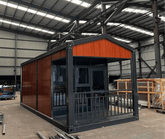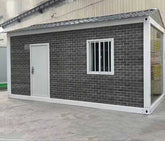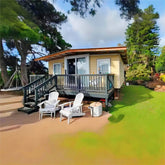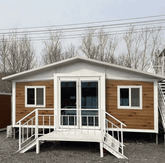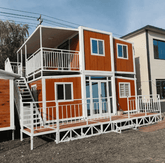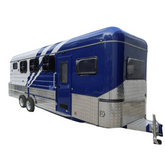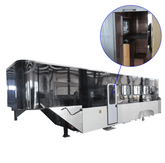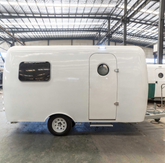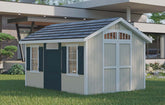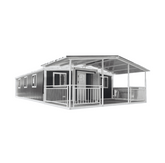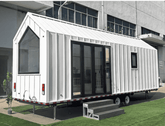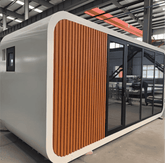Mobile Home vs Traditional Home: Which Is Better?
Many families dream of owning a suburban house with a yard, but saving for a big down payment and mortgage on a traditional home can be hard. For budget-conscious buyers, factory-built mobile (manufactured) homes offer a cheaper path. We’ll compare mobile homes and site-built homes in simple terms, covering costs, pros, and cons. In particular, we explain why a single-wide mobile home – often available under $35,000 – can be a very affordable option. For example, Bankrate notes that a manufactured home lets you “enjoy more space than you could otherwise afford”, which is a big plus if dollars are tight.
What Is a Mobile Home?
A mobile (manufactured) home is basically a house built in a factory and then moved to its site. In other words, its parts are constructed and assembled in a factory, then transported and installed on your lot. Modern manufactured homes can be very similar to regular houses – with wood framing, insulation, plumbing, drywall and siding. (Older units built before 1976 are officially called “mobile homes,” but today almost all are built to HUD standards and called manufactured homes.) Typically, a single-wide mobile home is about 1–2 bedrooms and about 60–80 feet long (often on one trailer frame). These homes sit on piers or blocks instead of a permanent foundation, but once set up they look and function much like ordinary houses. Despite the “trailer” image, new manufactured homes can even have features like porches, high ceilings and hurricane-rated construction, proving they are not flimsy temporary shelters but real houses made affordably.
What Is a Traditional Home?
A traditional (site-built or “stick-built”) home is built piece-by-piece on the buyer’s land. Builders pour a concrete foundation or basement, then frame walls, install the roof, and finish the interior all on the property. This process requires storing lumber and materials on site and working through any weather delays. The result is a home built entirely in place. Traditional homes can be made to any custom design – from a small cottage to a large multi-story house. They often include features like basements or full-height garages. Because each step (foundation, framing, roofing, etc.) is done on site, building a traditional home typically takes longer and costs more than a factory-built home.
Cost Comparison
- Home price: Factory-built homes cost much less upfront. For example, one industry group found the average manufactured home sale (without land) was about $108,000, versus $365,000 for an average new site-built home. Bankrate (citing U.S. Census data) reported similar gaps – roughly $128,000 for a new manufactured home vs. about $500,000 for a new stick-built house.
- Utilities and taxes: Smaller homes cost less to heat, cool, and insure. Because single-wide mobiles are compact, heating bills and electric use are generally lower. Property taxes tend to be lower as well on a cheaper home. (As one guide notes, smaller manufactured homes “typically have lower property taxes and insurance rates”.)
- Extra costs: Keep in mind land and placement fees. If you own the land, you’ll pay for site prep, foundation or piers, and utility hookups. If you rent space in a mobile home park, expect a monthly lot rent.
Pros and Cons of Mobile Homes
Pros:
- Much cheaper: A new manufactured home typically costs at least half as much as a comparable stick-built home. This means a much smaller loan and payment.
- Built faster: Mobile homes are built in climate-controlled factories, avoiding weather delays. They can often be completed and delivered in just a few weeks, whereas a custom site-built home can take a year or more.
- Easy to maintain: Because parts are standardized, repairs can be simpler. Many manufacturers offer warranties, and replacement parts are readily available.
- Good value: You might get more square footage or nicer finishes for the same money. As Bankrate notes, a manufactured home lets you get “more for your money” than you might with the same budget on a regular house.
- Community amenities: Many mobile-home parks include perks like clubhouses, pools and playgrounds for residents. These amenities are part of the lot rent and often cost far less per month than equivalent neighborhood fees.
Cons:
- Less customization: You choose from existing floor plans and options. After your mobile home is built, it can be harder to add or change walls compared to a site-built home. Retrofits (like adding a new room) can be difficult.
- Land/lot costs: If you don’t own land, you’ll pay rent on a lot in a mobile-home community. This monthly fee adds to your housing cost. Owning land adds one-time site prep costs (foundation, utilities) that stick-built homebuyers would also face.
Why Consider Single Wide Mobile Homes Under $35,000?
- Very low purchase price: We have Single Wide Mobile Homes Under $35,000. (New single-wides typically run $60–90K, so sub-$35K likely means sale or discounted price for the limited time) This ultra-low price is often less than a typical down payment on a stick-built house. It makes homeownership possible for people who might otherwise only afford renting.
- Tiny mortgage/payment: With a price that low, your mortgage (or loan) will be small. For example, a $30K home might cost only a few hundred dollars per month – in many areas that’s less than renting a comparable trailer or apartment. You’ll own a home outright much faster.
- Access to loans: Government-backed loans can apply to manufactured homes. FHA and VA mortgages, for example, cover many factory-built homes. That means even first-time buyers or veterans can get financing that might be out of reach for a regular home.
- Energy savings: Single-wides are compact, which keeps utility bills down. New models often include energy-efficient windows and appliances. The smaller space is easier (and cheaper) to heat and cool than a big house.
- More home than renting: If you’re currently renting, you can trade that monthly cost for ownership. For just the price of rent, you could own a home. As Bankrate points out, with manufactured housing you can enjoy “more space than you could otherwise afford”, making home life more comfortable.
- Quick move-in: Single Wide Mobile Homes ship on one trailer and need less site work, so setup is fast and less expensive. You can move in within weeks after purchase, instead of waiting many months for new construction.
- Good fit for small households: These homes typically have 1–2 bedrooms, so they suit singles, couples or small families well. Retirees and empty-nesters also find them ideal – the space is cozy but not overwhelming.
Which Is Better for You?
It depends on your goals and situation. Budget vs. space: If your entire budget is only around $35K, a single-wide mobile home may be the only way to own instead of rent. If you have more funds available, you might instead look at a larger manufactured model or save for a site-built home with more rooms. Keep in mind that mobile homes offer great value for the money, but as Bankrate cautions, they “don’t appreciate as well as traditional homes”. In other words, a stick-built house is more likely to gain equity over time.
Land and location: Do you own (or can you buy) a lot cheaply? Placing a single-wide on your own land can be very affordable. If you need a home on short notice in a certain area, manufactured homes can be brought in quickly. However, if you dream of a home in an upscale neighborhood or one with a permanent foundation/basement, a traditional house may be your only option.
Lifestyle: If you want a large yard, custom architecture, or specific amenities (like a basement or garage), a site-built home wins. But if you value lower bills, less maintenance, or community perks (some parks have pools and events), a mobile home is attractive. For many budget buyers, getting a whole home of their own outweighs the downsides. As one analysis notes, manufactured homes now have “efficient building processes, customizable layouts, [and] high-quality” construction at a lower cost.
Conclusion
Mobile (manufactured) homes and traditional stick-built houses each have strengths. A mobile home will cost much less upfront and monthly, which makes it a smart, budget-friendly choice for many buyers. A single-wide under $35,000 lets people own instead of rent, with utilities and taxes that are often quite low. As Bankrate puts it, a well-chosen manufactured home can be “a great forever home if you want more for your money”.
On the other hand, traditional homes can offer more space, flexibility and long-term equity. They generally appreciate better, so they’re good if you plan to invest in your home’s value. But they are very expensive and you can’t move them to anywhere. Ultimately, the “better” choice comes down to your budget, lifestyle and goals. If saving money is your top priority, and you can handle the trade-offs, a single-wide mobile home under $35K could be a very smart, affordable option. With the right information, you’ll make the choice that works best for you.



